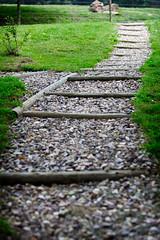Eventually we will run out of stuff. It’s simpler to grow paper than it is to grow tin or aluminum, or fresh water, or viable ocean, or MRSA-resistant cells. This kind of despair is boring. There must be something that comes after.
So where are we? On the one hand, we face remarkable possibility: future books and publishing platforms, among many things, could offer an increasingly networked experience among items, as well as an increasingly rich visual and simulative experience. On the other, we face a likely scenario where, at best, resources necessary for production and survival will become increasingly constrained (at worst, well, we shall not belabor the point).
If we do not exterminate one another over food and water or perish from incurable disease, in future decades we may consider all of Google’s services to have been a single book, a single knowledge system. Google is, on the broad view, a creative system, comprised of individual creators whose skills range from programming to poetry. It has a systemic creativity. However, Google is not the only possibility. Other systems could emerge.
The point of considering systemic creativity and display resolution together is to highlight the increasing richness of links between objects and objects, as well as content and persons. There are other ways that content is getting denser and more interconnected (next-generation broadband networks, cheap and small RFID transmitters, augmented reality programming, etc.), but considering social networks and displays together helps us see the balancing act of knowledge systems that deliver systemic and personal, experiential richness.
But what does this have to do with thinking about Google as a book? There is a positive correlation between the elision of individual works as they are networked together with the increased richness of information offered by software services and hardware. Google offers personal experience just as it offers readers millions of books in an anonymous heap. Both the former and the latter enrich a “user experience,” where the user is always assumed to have more to do than read. There are no more readers. There are only users.
And in a world of users instead of readers, software services like search, mapping, communication, social networking, and electronic publishing are all part of a knowledge system. It is both analogous to a book as well as an aggregation of other books. But this also means that software services and apps are a form of creative output that is not just a use of human creativity, but a part of a systemic publication of a broader work.
And so the future of creativity is both very old and very new. Creating individually will never stop, but there is more room for also creating things that are not writing human language at all. Services, apps, and systems have creativity of their own even if it surpasses human design. Publication and creativity in the context of users instead of readers is about creativity that is agnostic to individual people.
But it will fail.
As John Law (2011) reminds us, complex systems do not degrade; they collapse. It is easy to imagine this kind of creative environment over the next 30 years. It is impossible to imagine it over the next 200. The Internet will not seem like an unlimited knowledge frontier if we have to run computing devices on solar power or biodiesel, or if we no longer have the fresh water or rare earth minerals to support their manufacture. What we discover in the short term through this exciting revolution in creative potential and publishing may well be passed on, but the system itself probably will not.
I don’t imagine that this will translate into a return to books as if the Internet had never happened. But it does mean that in addition to individual and systemic creativity, there will arise a need for a kind of translational creativity. How do we invent a new form that can capture what we’ve done as the resources to support it cease to exist? There will be creativity in facilitating a graceful decay. Authorship could be considered a kind of ligature between digital and non-digital, or sustainable and non-sustainable.
Humanity will probably survive. Enlightenment sensibilities of creativity will not. In the ruins of informational and creative riches, there will be new knowledge systems cobbled together from the past, just as all knowledge systems have been. But this present will be defined by what we can salvage from it, not by what it passes on to subsequent generations as part of an overall march toward limitless progress.



















